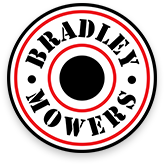A grass catcher is a bag or container attached to the lawnmower that works to collect cut grass. Though it can be helpful, many drawbacks come with using this attachment.
How Grass Catchers Affect Mowing Performance
One of the drawbacks is the clumps of leaves and other soil particles. These could make their way into the blades during use. Once this happens, it could impact how well your mower performs. Also, the clogging could increase fuel consumption by straining the engine.
Another drawback to using grass catchers is that it reduces the cutting height. The grass catcher may alter the cutting height by pressuring the blades downward. It can be an issue for those trying to save time and money by not frequently mowing.
The size of grass catchers can affect the time it takes to mow a lawn. The wider the catcher, the greater amount of work it will require to mow. Also, if you have a larger lawn, it can take longer to complete with a larger catcher.
Be careful not to move too fast. Your grass catcher will pick up rocks, sticks, and any other debris that may be in your lawn. By moving too fast, you can cause damage to your mower, damage property, or harm people.
You might experience engine problems if you don’t clean the grass catcher often. If left unchecked, debris can build up within the catcher. Then, clogging will block airflow or possibly hurt the engine by weighing down one of its parts.
Allowing too much grass to accumulate in your catcher will also cause problems. The speed at which the grass collects and the air pressure levels can affect how fast the catcher fills.
Adjusting Your Mower to Get Better Results
Modifying your mower can help reduce these drawbacks. You may get a better fuel consumption rate by adjusting the airflow controls. In addition, you can install newer blades and tires on your mower.
Can Changing Cutting Heights Help?
You could change cutting heights on many models. Regardless, this is often overridden by the grass catcher attachment. It would be as if you adjusted the mower to a lower setting only to have it go back to its original height. It happens once the grass catcher takes over.
The easiest way to deal with this is to remove the grass catcher. Mow on the lowest cutting setting first and adjust accordingly for your next pass. Doing this will ensure a clean cut through your lawn with no clumps of grass anywhere.
Let the Mower Sit Without the Catcher Attached
There's also a way to reduce the clumps of grass created while using a grass catcher. You need to secure your mower and let it sit without the catcher attached. After a few days, run your mower at its highest setting for one minute. The air pressure will blow away any extra soil that the grass catcher may have blown into the blades.
As noted, grass catchers may be helpful but could have adverse effects as you mow. To avoid these adverse effects, be sure the grass catcher is set to the correct height. Also, remove any debris that could be stuck and possibly block airflow. There's nothing wrong with using grass catchers, but it pays to know their shortcomings.
